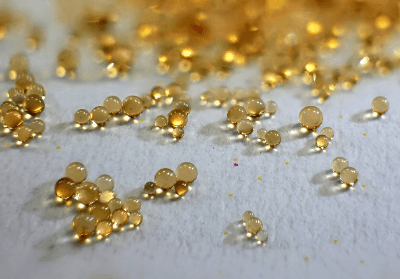What Is an Ion Exchange Resin?

Ion exchange resins are used to purify water. The surface of the resin is modified with sulfur groups and ammonium ions. When water flows through the resin, the ionic impurities in the water are exchanged with the ions on the surface of the resin, and the impurities are removed. Ion exchange resins are divided into two categories, cation exchange resins and anion exchange resins. They are used according to the type and strength of the ions to be removed. Ion exchange resins are used in a variety of applications, including the production of pure water and the removal of heavy metal ions.
Use of Ion Exchange Resins
Ion exchange resins are used to purify water. For example, seawater contains various ions such as salt, chlorine ions, and sodium ions. In addition, water used in factories may contain heavy metal ions. Ion exchange resins are used to remove these ions. Specific applications of ion exchange resins include the purification of pure water, processing of hard water with high calcium ion content into soft water, separation and recovery of heavy metal ions, and purification of pharmaceuticals.
Principle of Ion Exchange Resins
Ion exchange resins are spherical resins of about 0.5 mm in diameter with various functional groups modified on their surfaces. The modified portions exist in the form of ions and have a positive or negative charge. When water-containing ions flow through the resin, the ions in the water are exchanged with the ions in the resin depending on the strength of the ionic charge, i.e., the ions in the water are removed by the resin. Ion exchange resins can be divided into two types.
1. Cation Exchange Resins
Acidic functional groups are introduced on the surface of the resin to remove cations from water. Sulfo groups, which are strong acids, or carboxylic acid groups, which are weak acids, are modified on the surface of the resin, and the resin is used according to the strength of the ion to be removed.
2. Anion Exchange Resins
A basic functional group is introduced on the surface of the resin, which is used to remove anions from water. Ammonium ions and diethylamino groups are modified to remove anions such as chlorine ions.
Ion Exchange Resin Principle
The ability to remove ions depends on various conditions such as the ionic strength of the resin, the strength of the ions in the water, the concentration, and the column temperature. Therefore, optimization of conditions is essential for actual use.
Ion Exchange Resin Lifetime and Regeneration Methods
Ion exchange resins purify water by exchanging ions contained in functional groups modified on the resin surface with ions in the water. Therefore, as ion exchange resins continue to be used, the ions on the surface of the resin will continue to be replaced by ions in the water, and the ion exchange capacity will decrease.
However, ion exchange resins can be regenerated and reused. By immersing the cation exchange resin in hydrochloric acid and the anion exchange resin in sodium hydroxide, the ions in the water adsorbed on the ion exchange resin are exchanged with hydrogen ions from the hydrochloric acid and hydroxide ions from the sodium hydroxide. This allows the ion exchange resin to be regenerated and utilized.
Disposal of Ion Exchange Resins
Ion exchange resins can be regenerated and reused as described above. On the other hand, if the resin itself deteriorates, if the modified ion-exchange groups decompose, or if the ion-exchange groups are covered by contamination that accumulates on the resin surface, the resin cannot be regenerated.
When ion exchange resins are discarded after their performance has deteriorated to the point that they can no longer be used, they are generally incinerated. However, modified functional groups such as sulfo groups and chloride ions contained in water may decompose during incineration or change to oxides, which may cause air pollution. The disposal of ion exchange resins must comply with local government ordinances.
Pure Water Production Using Ion Exchange Resins
Ion exchange resins are used in pure water production equipment. However, ion exchange resins cannot remove impurities other than ions in the water. To remove such impurities, pure water production equipment includes sand and activated carbon in addition to ion exchange resins. First, sand filtration activated carbon treatment, and pre-treatment filters are used to remove impurities such as solids. After simple purification, pure water is produced by treatment with ion exchange resins.